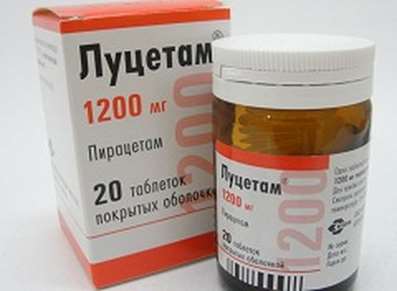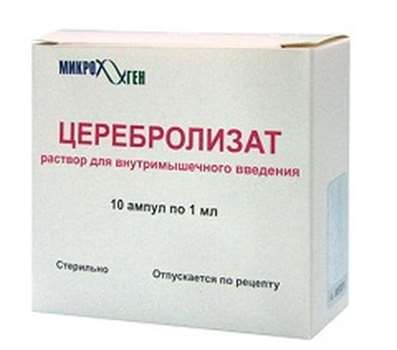Instruction for use: Quintasol
I want this, give me price
Dosage form: Solution for infusions
Active substance: Kalii chloridum + Calcii chloridum + Magnii chloridum + Natrii acetas + Natrii chloridum
ATX
B05BB01 Electrolytes
Pharmacological group
Regulators of water-electrolyte balance and acid-base balance in combinations
The nosological classification (ICD-10)
A00-A09 Intestinal infections
A48.3 Toxic shock syndrome: Bacteremic shock; Infectious-toxic shock; Intoxication syndrome; Toxico-infectious shock; Toxic shock; Chronic intoxication in diseases of the digestive tract; Chronic intoxication in gastrointestinal infections; Endotoxin shock
E86 Decreased fluid volume [hypovolaemia]: Water deficit recovery; Indemnification of isotonic deficiency of water; Compensation for isotonic sodium deficiency; Compensation BCC; Replenishment of water deficit with stored KShS; Replenishment of fluid volume; Replenishment of BCC; Replenishment of electrolytes with stored KHS; Hypovolemic conditions; Hypovolemic condition; Hypovolemia; Hypotonic form of hypohydration; Hypochloremia with dehydration; Dehydration of different origin; Dehydration in children; Substitution of plasma volume for blood loss in pediatrics; Substitution of plasma with its losses and burns; Isotonic dehydration; Isotonic form of hypohydration; Violation of the water-salt balance; Dehydration;Dehydration in acute intestinal infections; Acute hypovolemia; Loss of fluid in burns; Toxicosis with exsycosis
E87.2 Acidosis: Acidosis of kidney; Acidotic shifts; Depletion of alkaline blood reserve; Decompensated acidosis; Acidosis in liver diseases; Respiratory acidosis; Ketoacidosis; Metabolic acidosis in acute intestinal infections; Alcoholic ketoacidosis; Metabolic acidosis; Hereditary renal acidosis; Renal acidosis; Renal tubular acidosis; Diabetic ketoacidosis; Diabetic acidosis; Renal tubular acidosis
K31.5 Duodenal obstruction: Duodenal obstruction
K56 Paralytic ileus and intestinal obstruction without hernia
K65.0 Acute peritonitis: Subdiaphragmatic abscess; Abdominal abscess; Abscess of abdominal cavity; Abscess of intraperitoneal; Abscess of abdominal organs; Intraperitoneal abscesses; Intraperitoneal abscess; Acute purulent-inflammatory process of the abdominal cavity; Acute diffuse peritonitis; Intraabdominal abscess; Subdiaphragmatic abscess
A41.9 Septicemia, unspecified: Septic diseases; Septicemia / bacteremia; Toxico-infectious shock; Endotoxin shock; Bacterial septicemia; Bacterial infections of severe course; Generalized infections; Generalized systemic infections; Infections generalized; Wound sepsis; Septiccopymia; Septic-toxic complications; Septicemia; Septic conditions; Septic shock; Septic condition; Septic shock
K51 Ulcerative colitis: Colitis acute ulcerative; Colitis ulcerative; Ulcerative-necrotic colitis; Colitis ulcerative-hemorrhagic nonspecific; Colitis ulcerative and trophic; Colitis ulcerative idiopathic; Colitis ulcerative nonspecific; Nonspecific ulcerative colitis; Proctocolitis ulcers; Hemorrhagic purulent rectoxitis; Rectoccolitis ulcerative-hemorrhagic
R57.1 Hypovolemic shock: Hypovolemic shock during surgery; Acute hypovolemia
R58 Bleeding, not elsewhere classified: Abdominal apoplexy; Hemorrhagia; Haemorrhage of the esophagus; Hemorrhage; Generalized bleeding; Diffuse bleeding; Diffuse bleeding; Prolonged bleeding; Blood loss; Blood loss during surgical interventions; Bleeding during surgery and in the postoperative period; Bleeding during labor; Bleeding and haemorrhage in hemophilia B; Bleeding from the gums; Bleeding intraoperative abdominal; Bleeding against a background of coumarin anticoagulants; Hepatic hepatitis; Bleeding in hemophilia A; Bleeding at hemophilia A; Bleeding with inhibitory forms of hemophilia A and B; Bleeding due to leukemia; Bleeding in patients with leukemia; Bleeding; Bleeding due to portal hypertension; Bleeding due to hyperfibrinolysis; Drug bleeding; Local bleeding; Local bleeding due to activation of fibrinolysis; Massive blood loss; Acute blood loss; Parenchymal hemorrhage; Hepatic bleeding; Postoperative hemorrhage; Kidney bleeding; Vascular-platelet hemostasis; Traumatic bleeding; Threatening bleeding; Chronic blood loss
T30 Thermal and chemical burns of unspecified site: Pain syndrome with burns; Pain in burns; Pain with burns; Sluggishly healing post-burn wounds; Deep burns with a wet scab; Deep burns with abundant compartments; Deep burn; Laser burn; Burn; Burn of rectum and perineum; Burn with mild exudation; Burn disease; Burn injury; Superficial burn; Superficial burn of I and II degree; Superficial skin burns; After-burn trophic ulcer and wound; Post-burn complication; Loss of fluid in burns; Sepsis burn; Thermal burns; Thermal skin lesions; Thermal burn; Trophic after-burn ulcers; Chemical burn; Surgical burn
T79.4 Traumatic shock: Haemorrhagic shock; Crash Syndrome; Posthemorrhagic shock; Postoperative shock; Post-traumatic shock; Post-traumatic shock; Traumatic shock; Syndrome of hemorrhagic shock and encephalopathy
Z100 * CLASS XXII Surgical practice: Abdominal surgery; adenomectomy; Amputation; Coronary angioplasty; Angioplasty of the carotid arteries; Antiseptic skin treatment for wounds; Antiseptic Hand; Appendectomy; atherectomy; Balloon coronary angioplasty; Vaginal hysterectomy; The coronary bypass; Interventions in the vagina and cervix; Interventions on the bladder; Intervention in the mouth; Restoration and reconstructive surgery; Hand hygiene of medical personnel; Gynecologic surgery; Gynecological intervention; Gynecological surgery; Hypovolemic shock during operations; Disinfection of purulent wounds; Disinfection of wounds edges; Diagnostic intervention; Diagnostic procedures; Cervical Diathermocoagulation; Long-surgery; Replacing the fistula catheters; Infection in orthopedic surgery; Artificial heart valve; cystectomy; Short-term outpatient surgery; Short-term operation; Short surgical procedures; Krikotireotomiya; Blood loss during surgery; Bleeding during surgery and in the postoperative period; Kuldotsentez; laser photocoagulation; laser coagulation; retinal laser coagulation; Laparoscopy; Laparoscopy in Gynecology; CSF fistula; Small gynecological operations; Small surgical procedures; Mastectomy and subsequent plastic; mediastinotomy; Microsurgical operations on the ear; Mukogingivalnye operation; suturing; Minor surgery; neurosurgical operation; Immobilization of the eyeball in ophthalmic surgery; testectomy; pancreatectomy; Perikardektomiya; The period of rehabilitation after surgery; The period of convalescence after surgery; Percutaneous transluminal coronary angioplasty; Pleural thoracentesis; Pneumonia postoperative and posttraumatic; Preparation for surgical procedures; Preparation for surgery; Preparation of the surgeon's hands before surgery; Preparation of the colon for surgical procedures; Postoperative aspiration pneumonia in neurosurgical and thoracic surgery; Postoperative nausea; Postoperative bleeding; postoperative granuloma; postoperative shock; The early postoperative period; myocardial revascularization; Radiectomy; gastric Resection; bowel resection; uterine Resection; liver Resection; enterectomy; Resection of part of the stomach; Reocclusion of the operated vessel; Bonding tissues during surgical procedures; Removal of sutures; Condition after eye surgery; Condition after surgery; Condition after surgery in the nasal cavity; Condition after gastrectomy; Status after resection of the small intestine; Condition after tonsillectomy; Condition after removal of the duodenum; Condition after phlebectomy; Vascular surgery; Splenectomy; Sterilization of surgical instruments; Sterilization of surgical instruments; sternotomy; Dental surgery; Dental intervention in periodontal tissues; strumectomy; Tonsillectomy; Thoracic surgery; Thoracic surgery; total gastrectomy; Transdermal intravascular coronary angioplasty; Transurethral resection; Turbinektomiya; Removal of a tooth; cataract surgery; Removal of cysts; tonsillectomy; Removal of fibroids; Removing the mobile primary teeth; Removing polyps; Removing broken tooth; Removal of the uterus body; Removal of sutures; Fistula likvoroprovodyaschih ways; Frontoetmoidogaymorotomiya; Surgical infection; Surgical treatment of chronic limb ulcers; Surgery; The surgery in the anal area; The surgery on the colon; Surgical practice; The surgical procedure; Surgical interventions; Surgery on the gastrointestinal tract; Surgical procedures on the urinary tract; Surgical procedures on the urinary system; Surgical intervention of the genitourinary system; Surgical procedures on the heart; Surgical manipulation; surgery; Surgery on the veins; Surgical intervention; Vascular surgery; Surgical treatment of thrombosis; Surgery; cholecystectomy; Partial gastric resection; hysterectomy; Percutaneous transluminal coronary angioplasty; Percutaneous transluminal angioplasty; Coronary artery bypass; tooth Extirpation; Extirpation of milk teeth; pulpectomy; pulsative cardiopulmonary bypass; tooth Extraction; teeth Extraction; cataract extraction; Electrocoagulation; endourological intervention; episiotomy; Etmoidotomiya; Complications after tooth extraction
Composition and release form
Solution for infusion - 1 liter
Sodium chloride 5.26
Potassium chloride 0.37 g
Calcium chloride 6-water (in terms of anhydrous) 0.28 g
Magnesium chloride 6-aq. (In terms of anhydrous) 0.14 g
Sodium acetate 3-water (in terms of anhydrous) 4.1 g
Ionic composition: sodium ion 140 mmol
Potassium ion 5 mmol
Calcium ion 2.5 mmol
Magnesium ion 1.5 mmol
Chloro-ion 103 mmol
Acetate ion 50 mmol
In bottles for blood substitutes of 200 and 400 ml.
Description of dosage form
Colorless transparent liquid.
Pharmachologic effect
Mode of action - Plasma-replacing, normalizing acid-base balance, normalizing the water-electrolyte balance.
It relieves metabolic acidosis, normalizes acid-base balance, stabilizes water metabolism and electrolyte blood composition. The cationic composition of the solution and the content of chloride ions correspond to the electrolyte composition of the blood plasma, the acetate ion is rapidly metabolized with the formation of bicarbonate.
Indications of the drug Quintasol
Shock (complex treatment); Thermal injury and acute blood loss; Hypotonic and isotonic form of hypohydration and metabolic acidosis; Acute diffuse peritonitis and intestinal obstruction (correction of water-salt balance); Intestinal fistulas, accompanied by electrolyte disturbances; Dehydration and metabolic acidosis in acute intestinal infections; Conducting plasmapheresis.
Contraindications
Alkalosis, hypertonic dehydration, conditions in which the administration of large amounts of liquid is contraindicated.
Side effects
When applying the drug according to the directions, side effects were not noted.
Dosing and Administration
IV, by drop infusion, allowed by stream infusion. Adults - in a daily dose of 5-20 ml / kg of body weight, if necessary, increase to 30-40 ml / kg, the rate of administration of 60-80 drops per minute (allowed by jet).
Children - in a daily dose of 5-10 ml / kg of body weight, the rate of administration of 30-60 drops per min.
When carrying out plasmapheresis, the drug is administered in a double volume compared to the removed plasma (1200-2400 ml) in combination with colloidal solutions in the case of pronounced hypovolemia.
Special instructions
Volemic effect of the drug is short, therefore, in the treatment of severe hypovolemia, it is recommended to combine Quintasol with colloid solutions, blood and its components.
Manufacturer
OJSC "Biosintez", Russia.
Storage conditions of the drug Quintasol
In a dry place at a temperature of 10-25 į C.
Keep out of the reach of children.
The shelf life of the drug Quintasol
2 years.
Do not use beyond the expiration date printed on the package.

 Cart
Cart





